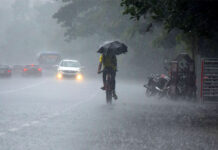The lifeline of India’s agriculture is the Southwest Monsoon. The monsoon rains drench the soil and make it fertile for the crop. For sugarcane, monsoon plays an important role; hence, every year during the beginning of June, all eyes are on the skies.
It was evident in the 2023-24 sugar season, when owing to lesser rains in the initial period, sugarcane production was expected to be much lower than the previous season, however, with better rainfall in the subsequent months, both sugarcane yields and recovery improved, resulting in better sugar production than what was initially thought.
The India Meteorological Department (IMD) has predicted above-normal monsoon for the country. El Nino is expected to be replaced by La Nina. All the major international and domestic weather forecasters have spoken in unison about India having a good rainfall from June to September.
The monsoon arrived over Kerala two days ahead of schedule, bringing substantial rainfall to the peninsula region. Yet, despite this promising start, the monsoon stalled last week, resulting in an overall rainfall deficiency for June.
IMD said that the country received 20% less rainfall since the beginning of June, at 64.5 millimetres (mm), which is less than its long-period average (LPA) of 80.6 mm. Barring the South Peninsula which received almost 16% higher rainfall than normal, other regions so far received deficient to large deficient showers.
According to IMD’ release on June 22, conditions are favourable for further advance of Southwest Monsoon into some more parts of North Arabian Sea, Gujarat State, remaining parts of Maharashtra, some more parts of Madhya Pradesh, Chhattisgarh, Odisha, Gangetic West Bengal, Jharkhand, Bihar and some parts of East Uttar Pradesh during next 3-4 days.
A good Monsoon assumes critical importance for crops and the livelihood of millions of farmers. Hence, it is high time that the sugar industry in collaboration with the Government, farmers and other stakeholders should formulate a long-term plan to de-risk the rippling effect of monsoon uncertainty on India’s sugarcane and sugar production.
For further inquiries or to contact Uppal Shah, Editor-in-Chief, please send an email to Uppal@chinimandi.com.












